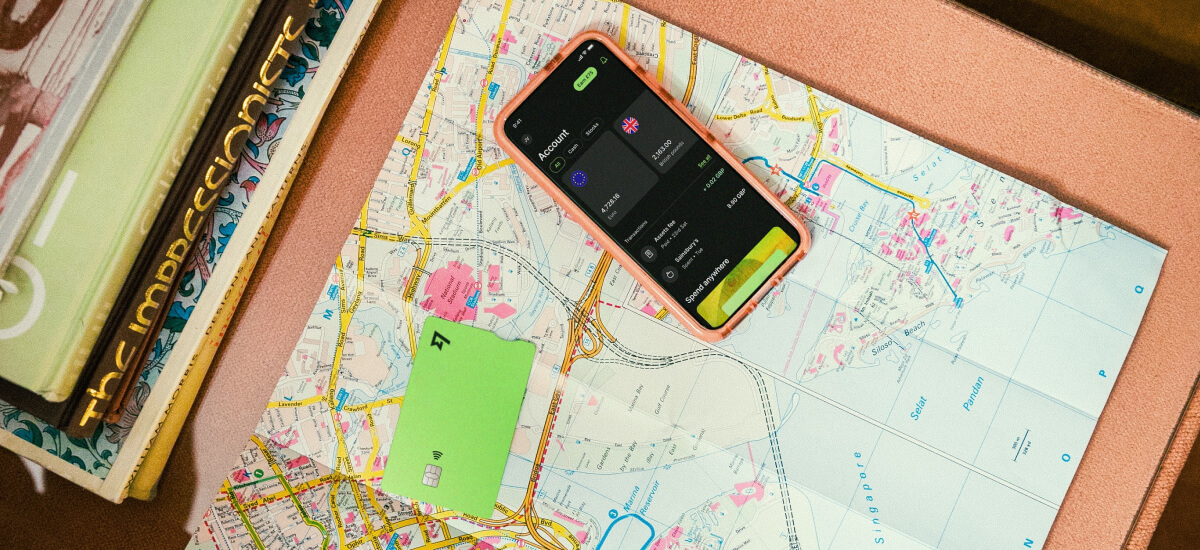Chase foreign transaction fees: Complete guide
Everything you need to know about Chase foreign transaction fees.

As an international student in the USA, you’ll want to make sure your money goes as far as possible. That doesn’t just mean shopping on a budget – it also means making sure you’re set up with the perfect international student bank account.
Bank accounts for international students are widely available – often you can simply get the same account as a US citizen. However, it’s worth thinking about your particular needs as an international student: you may have a greater need for certain banking services, such as sending and receiving money from overseas.
That’s why we’ve put together this guide to finding the best bank account for international students.
| Table of contents: |
|---|
Before we run through your options, it’s worth thinking about which factors matter most for you. The best account for you will depend on your priorities. Here are some things to bear in mind.
Not quite everything happens online these days. Even though you can manage your finances via your computer or phone, you’ll struggle to get cash out without a good old-fashioned ATM. So you should check that your prospective bank has some ATMs near where you live or study.
This will matter less, if you’ll not be using a lot of cash. You can always use the ATM of a different banking network, but you may face charges from both your own bank and the bank owning the ATM. It isn’t always the case though. You may end up getting charged by just one or if you’re in luck - neither.
Check that the bank of your choosing has got a nearby branch, too, if you’ll be needing to use on-site services.
It’s likely – but not certain – that your international student bank account will come with a credit or debit card that you can use instead of cash and for online purchases. Of course, cards vary widely in terms of what they offer and how much they cost to use, so check the details carefully.
Estimate how much of which features you’ll be choosing and check the bank’s fees for those types of transactions. You’ll want to make sure you get charged as little as possible for the banking options you’ll be using the most.
For example - if you’ll be making a lot of international transactions, choose a card that has no foreign transaction fees and gives fair exchange rates.
| Spend online and abroad without a foreign transaction fee - try the Wise Mastercard and you'll have 40+ currencies at your fingertips. |
|---|

You can expect to have to pay fees for some but not all services with your bank. There might be a monthly checking fee, though a lot of student accounts waive this.
You might only get a certain number of ATM withdrawals for free each month, inside or outside of your bank’s network. Plus the aforementioned credit or debit card will probably have its own list of fees.
On the other hand, some things are usually free, like internet banking. Take a look at the bank’s full fees list if you can, because you don’t want to get caught by surprise.
Make sure to go with a bank that’s FDIC insured, so that you can reclaim at least some money in the unlikely (but not entirely impossible) event that your bank goes under.
Sending money overseas from the USA – or receiving it into a US bank account – is traditionally pretty complex and expensive. If you use your bank to make the transfer, you might have to pay a fixed fee. More fees are often taken out of your transfer amount as the money makes its way through the complex SWIFT network, passing through other banks along the way. It’s often difficult to guess how much that will cost. Even receiving international transfers can be expensive – some banks charge for that, too.
Then there’s the question of the exchange rate. It’s unlikely that a bank will offer you the mid-market rate, which is the current average exchange rate, which banks generally use trading between themselves. Instead, they’ll mark that rate up, effectively meaning your money is worth less.
So, when choosing an international student bank account, find out how that bank treats international payments. But actually, you may well be best off considering an independent money transfer service like Wise. Wise will always give you the mid-market rate, with just a clear, transparent fee to pay based on your transfer amount. Via its worldwide network of interlinked local bank accounts, Wise can make international transfers both cheaper and faster.
Also check what sort of account you’re actually being offered. A normal, day-to-day bank account is called a checking account in the US. But if you also want to put some money aside and potentially earn some interest on it, you should look into savings accounts as well.
Banks offer a range of different savings accounts, so take a close look through their available products if this appeals to you. This is especially worth doing if you’re hoping to stay in the US for the longer term.
International student bank accounts in the US are sometimes specially designed as such by the banks, and sometimes a more standard account that happens to be well suited to students.
Here’s a list of some of the most popular options – some specially designed, some not. Take a browse and see if you can find one that’s right for you. There are plenty of other options too, of course.
When browsing through that list, keep the points mentioned above in mind – what are the fees and features, how does it treat international transfers, and so on. If you can’t find one there that works for you, take a look elsewhere – you could even check to see if your college recommends a particular bank.
Here’s an overview of the process you’ll need to go through to open an international student account.
There’s no point getting your bank account until you’re definitely going to be studying in the US. Most other aspects of your move, from getting an offer to sorting your visa and booking your flight, should come first.
If you do need to send money into the US in these early stages, don’t forget about Wise.
Use the above list as a starting point, but you can look elsewhere too. Always think about your own particular needs, what actions you’re likely to be doing most, and whether the account offers good value for money in that area.
Don’t forget to check that your bank of choice will actually accept you. Some banks do require you to have a particular type of visa. And some require you to provide a social security number when you open the account, which could delay things for you.
A majority of banks require you to be a US resident before you can open an account. So unless you go with a bank that doesn’t require this, you’ll need to bide your time before you can open your account.
Wise, once again, can be super useful during the transition.
Many banks allow you to open a bank account online, but some may require you to go into a branch. Either way, they’re going to want to see some documentation. It’s likely to include the following:
You’ll also need to provide some money then and there to start your account with.
The best bank for international students in the USA of course depends on exactly what you need, but hopefully this has given you a useful place to start. Good luck exploring your options.
Don’t let the many available options deter you from finding the perfect fit. And more to the point, don’t let issues with your bank get in the way of having a great time while you’re studying in the US.
*Please see terms of use and product availability for your region or visit Wise fees and pricing for the most up to date pricing and fee information.
This publication is provided for general information purposes and does not constitute legal, tax or other professional advice from Wise Payments Limited or its subsidiaries and its affiliates, and it is not intended as a substitute for obtaining advice from a financial advisor or any other professional.
We make no representations, warranties or guarantees, whether expressed or implied, that the content in the publication is accurate, complete or up to date.

Everything you need to know about Chase foreign transaction fees.

Everything you need to know about PNC credit and debit card foreign transaction fees.

Wondering how to open a foreign currency account in the US? Struggling to find information? Read on to find out what you need.

Considering closing your foreign bank account? Discover the tax implications, benefits, and steps involved in making this decision. Learn more here.

Learn how to close your ADCB account from abroad with this comprehensive guide. Discover the steps, required documents, and tips for a smooth process.

Learn how to close your UAE bank account from abroad with this comprehensive guide. Discover the steps, required documents, and tips for a smooth process.